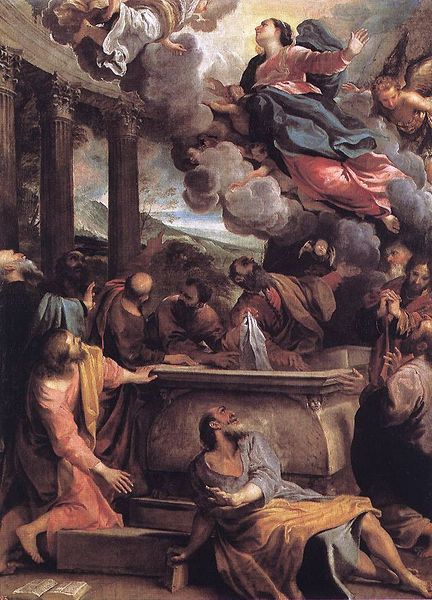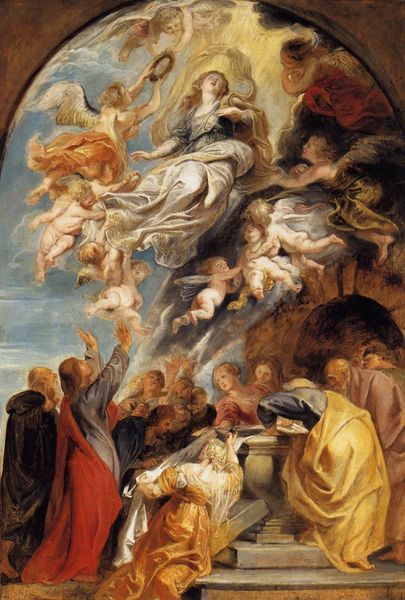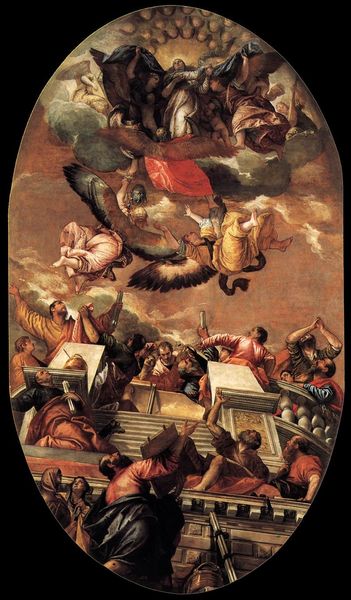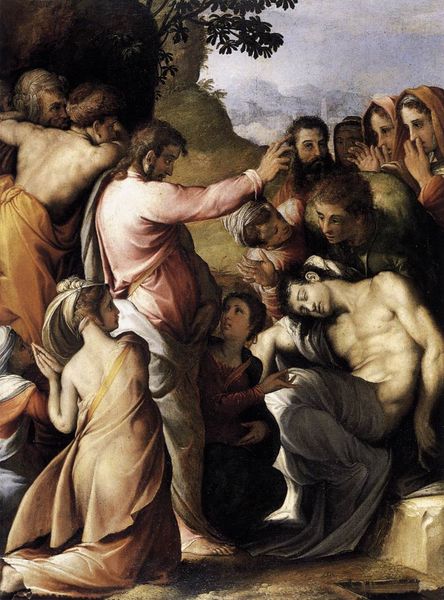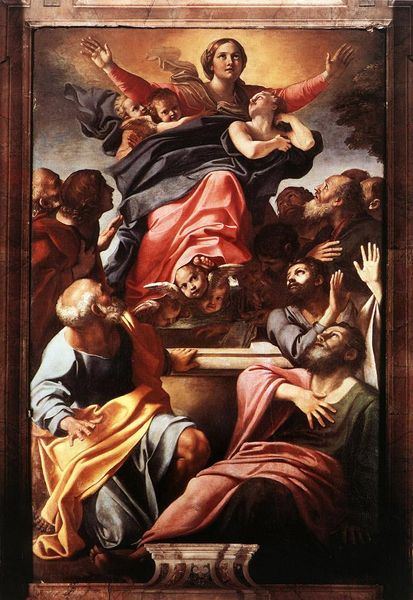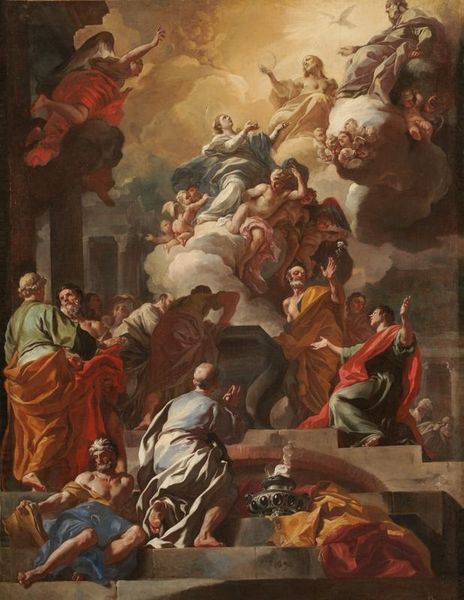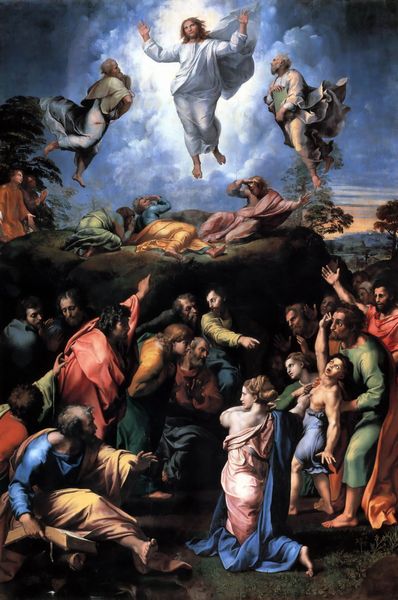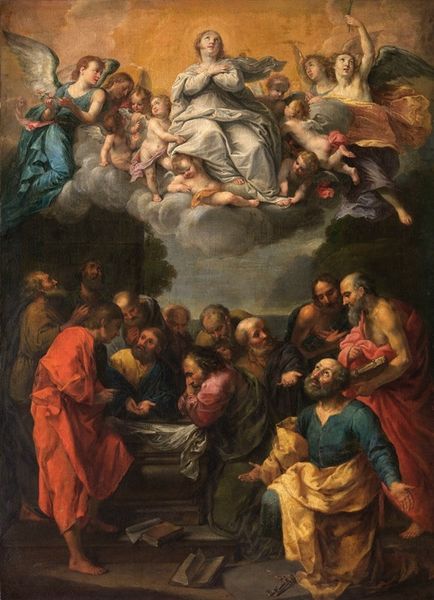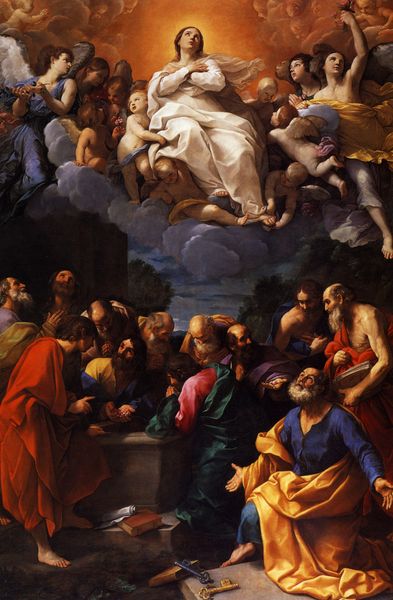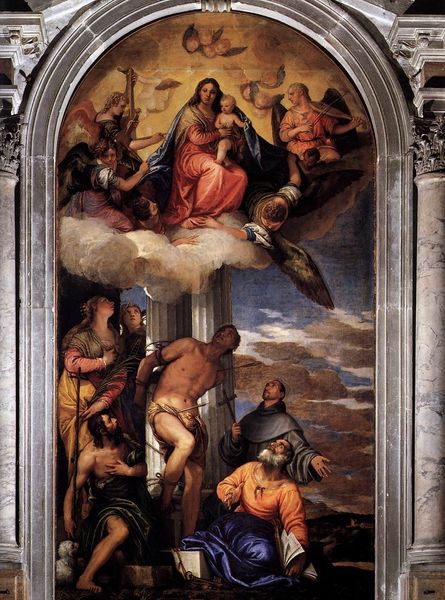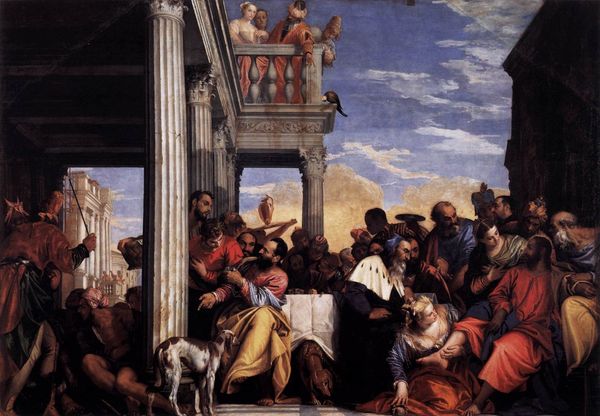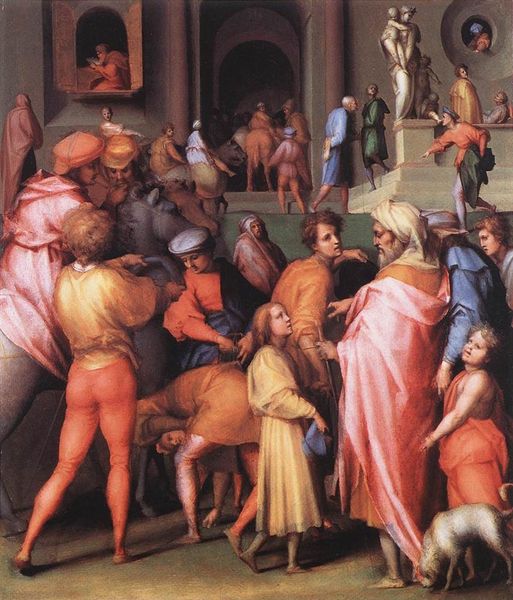
painting, oil-paint
#
venetian-painting
#
narrative-art
#
painting
#
oil-paint
#
mannerism
#
figuration
#
oil painting
#
chiaroscuro
#
christianity
#
history-painting
#
virgin-mary
#
angel
#
christ
Dimensions: 398 x 200 cm
Copyright: Public domain
Editor: So, here we have Paolo Veronese's "Assumption of the Virgin," painted in 1586 with oil on canvas. The upward surge of figures creates an intense feeling of movement. How do you interpret the themes and significance embedded in a piece like this? Curator: It’s fascinating how Veronese, working within the context of Mannerism and Venetian painting, uses this subject to explore ideas of power and representation. Consider the Council of Trent had recently emphasized the Virgin Mary’s role; here, Veronese isn’t just depicting a religious scene. He's negotiating complex political and social forces. How does the depiction of Mary ascending, surrounded by both heavenly and earthly figures, strike you in terms of gender and authority? Editor: I notice how Mary, although central, seems almost passively elevated. The men below seem more actively engaged. Curator: Exactly! And isn't that passivity, that elevation to a symbolic role, often what’s demanded of female figures in power? We should also ask: who commissioned this piece, and what messages were they hoping to convey about the church’s authority during a time of upheaval? It uses chiaroscuro to guide the viewer’s gaze, and asks, whose stories are illuminated, and whose are left in shadow? Editor: That's a compelling way to look at it – less about pure religious devotion, and more about the social and political dynamics at play. Curator: Precisely. It’s not just about the Virgin Mary’s ascent to heaven, but about the earthly powers that be constructing, interpreting, and controlling that narrative for their own purposes. Looking at art this way gives us insight into not just the religious narrative, but also the gender, race, and social constructs shaping the art historical record. Editor: I never considered the layers of power dynamics within religious art. I’m rethinking my whole approach now! Curator: It's about questioning the dominant narrative and searching for marginalized voices within these grand historical paintings.
Comments
No comments
Be the first to comment and join the conversation on the ultimate creative platform.
